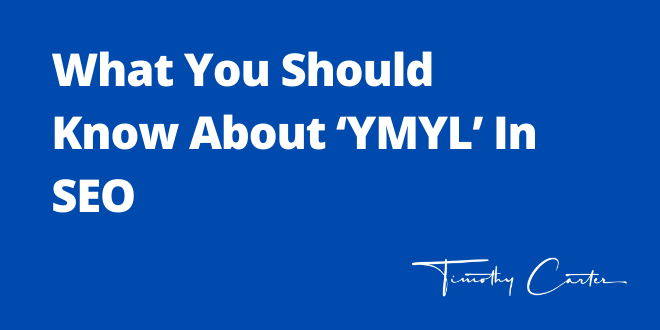
Five Actions To Take If Your SEO Agency Isn’t Showing Results
February 3, 2023
What You Should Know About ‘YMYL’ In SEO
February 17, 2023Like most people in the industry, I’ve always seen search engine optimization (SEO) as a long-term strategy — something to guide my businesses for years, if not decades, in attracting new traffic and winning new customers. In the early 2000s, SEO looked very different, and many pessimists insisted that search engines and SEO were short-term fads that would quickly disappear. Instead, search engines and SEO have evolved considerably — and only the most adaptable digital marketers have followed that developmental curve without heavy losses.
As such, I find it prudent to keep a steady eye on the near- to long-term future of SEO. What’s next for the industry, and what can webmasters start doing today to prepare for it?
In response to this question, I believe SEO is gearing up for a future that’s more local, more personalized and hyper-specific. But what exactly do I mean by that? And what can you do to prepare?
The Problem With SEO Predictions
First, I want to address a fundamental flaw with SEO predictions: they’re notoriously hard to make. That’s because SEO is dictated by a host of different variables, including technological development, choices by major institutions, governmental policies, consumer behaviors, public preferences and more. Few people could have predicted the modern landscape of SEO based on what we knew in 2005; similarly, as I make predictions for 2030 and beyond, you’ll have to take my forecasts with a grain of salt.
The Local, Personalized And Hyper-Specific Future of SEO
What do I mean by this description of SEO’s future?
Let me break it down individually:
Local. Local search has existed for the better part of 20 years, but in the near future, local searches are going to become even more important. Users will want more local options — and nationwide companies will learn to cater to local audiences in distinct ways, such as giving unique pricing or distinctive offers.
Personalized. The future of SEO will also be more personalized. Already, Google personalizes your searches based on your demographics, search history, online activity and more; that’s only going to become more complicated.
Hyper-specific. Gone will be the days of Google sending you to a generic Wikipedia page for whatever topic closely relates to your query. Instead, you’ll get super-specific recommendations, like detailed, niche pieces of content, products you can purchase or opportunities to interact with brands and websites directly.
Influential Factors
Why are these changes coming?
User data and machine learning. Google and other companies are digging deeper to mine personal data and understand user behavior. With the help of machine learning, they can make their technology hyper-personalized.
Micro algorithm updates. Google has migrated away from major algorithm overhauls and toward small, AI-driven tweaks. These micro-adjustments lead to a more specialized, fine-tuned search environment for users and webmasters alike.
Competition and webspace. The web is becoming more crowded. If you want any hope of standing out, you’ll need a way to differentiate yourself — which means appealing to a much more specific audience.
What You Can Do Now
What steps can you, a business owner, take now to get ahead of this SEO curve?
These are some of the best ways to start:
Pick up more local citations. Local SEO is going to become more important than ever, so it’s a great time to start picking up more local citations. Get your business featured in as many local listings as possible, and make sure those listings include all your information accurately. It’s also helpful to earn more customer reviews.
Develop content for individual cities. If you want to optimize for more local audiences, start developing content for individual cities. You can create subsections of your website or landing pages for individual cities, capitalizing on those specific local audiences. This is especially powerful if all your competitors are national, or if there are some areas your competitors are missing.
Target a niche audience and cater to them. Figure out a niche audience that your competitors aren’t targeting and begin researching them. The better you can cater to this hyper-specific segment, the more relevant you’ll be to them — and in most cases, relevance is much more valuable than audience size.
Keep a close eye on your competitors. Watch what your competitors are doing and how they adapt to the changing search landscape. Who are they targeting? What kind of content are they developing? How are they ranking? You can borrow some of their techniques this way or figure out their weaknesses so you can move in and trounce them.
Better understand your user behavior (and start brainstorming). Finally, start paying close attention to your user behavior patterns. How do people use your website? Which segments are most likely to make a purchase? How do they consume your content? Most importantly, how can you use these pieces of information to better cater to these users in the future? Could you give them unique offers that make them purchase your products? Could you offer them signature pieces of content that appeal to them specifically?
It’s hard to say what the future has in store for SEO or the world of online search, but I can confidently say the world of search in 2030 will be different than it is today. If you want to keep pace with your competitors and continue winning new visitors to your website, you’ll need to stay as flexible as possible.
Originally appeared in Forbes






